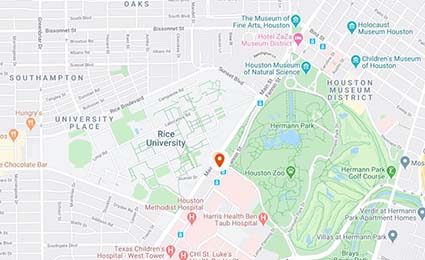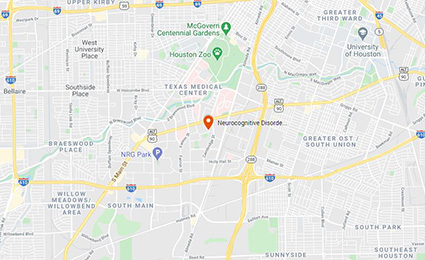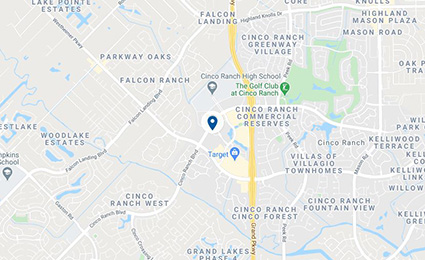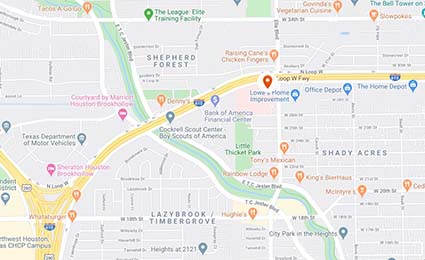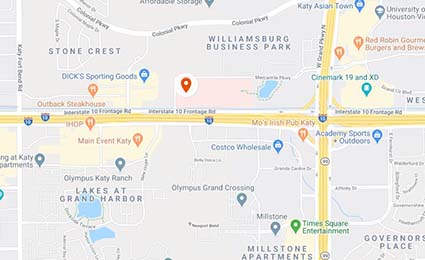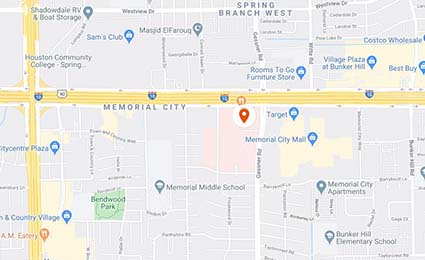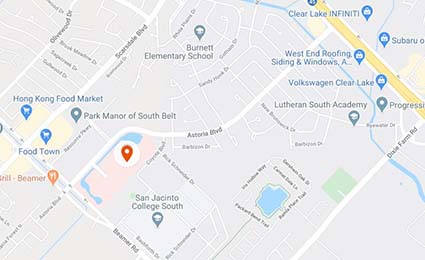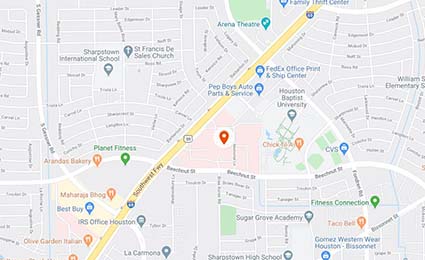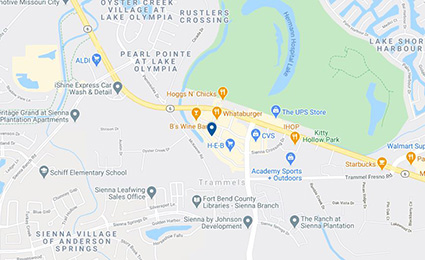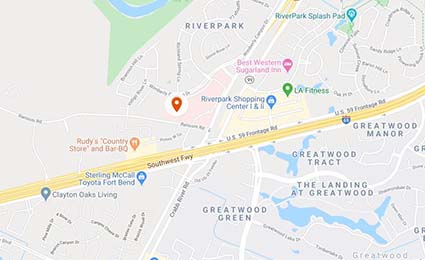Summer 2021 Pediatric Neuroscience Journal
It Takes an Orchestra to Play a Symphony
Great things happen when innovative people share a vision and are wholeheartedly committed to realizing it. With that in mind, we are pleased to welcome Brandon A. Miller, MD, PhD, to our pediatric neurosurgery team.
Dr. Miller has been involved in clinical medicine and basic science research simultaneously for more than 20 years. A physician-scientist, he has an interest in brain trauma and the long-term management of children with intraventricular hemorrhage and post-hemorrhagic hydrocephalus. He joins McGovern Medical School at UTHealth from the University of Kentucky Departments of Neurosurgery and Neuroscience, where he was director of the Pediatric Brain Injury Laboratory at the Spinal Cord and Brain Injury Research Center.
In this issue, you’ll also read how a team of scientists led by our pediatric neurosurgeon, Manish N. Shah, MD, developed a wearable device that uses night-vision goggle technology, near-infrared light, and high-resolution detectors to image awake infants with brain disorders. Cap-based transcranial optimal tomography (CTOT) is the first whole-brain functional imaging device that does not require an infant to be put under anesthesia.
Our entire team would like to thank Jason, Kristi, and L.J. Borchardt for sharing their stories. L.J. underwent selective dorsal rhizotomy at the age of 15 with Dr. Shah, who is director of the Texas Comprehensive Spasticity Center at UTHealth Neurosciences. The family also benefited from the new pediatric inpatient unit, which opened last December at our sister hospital, TIRR Memorial Hermann.
A special thanks to Hailee Nail and Alexis Shelly for sharing their experiences. Hailee was the first patient enrolled in a single-center trial of fetoscopic myelomeningocele repair using a patch made of cryopreserved human umbilical cord. Her daughter Lily was born with normal leg movement after repair of a small defect by the team of Stephen Fletcher, DO, a member of our pediatric neurosurgery team, and Kuojen Tsao, MD, co-director of The Fetal Center at Children’s Memorial Hermann Hospital. Alexis, who worked on the media relations team at UTHealth, was reunited with Dr. Fletcher 30 years after her surgery for occipital encephalocele.
Four novel studies underway at UTHealth seek to improve the outlook for children with recurrent malignant brain tumors. In our research section, we also report on the work of Rachael Sirianni, PhD, and her lab team to encapsulate drugs within biocompatible and biodegradable nanoparticles that serve as carriers to prolong drug action and target specific tissue sites. Her work, funded by the National Institutes of Health, complements the research we’re doing in the four single-center trials.
Our belief that unity is strength moved Children’s Memorial Hermann Hospital up 10 positions in the 2020 U.S. News and World Report annual rankings of children’s hospitals providing neurology and neurosurgery care in the United States. That’s just the beginning.
We hope you find the articles in this issue of the Pediatric Neuroscience Journal useful in your practice. If you have questions about any of our programs, please contact us directly.
With best wishes,
David I. Sandberg, MD, FAANS, FACS, FAAP
Professor and Director of Pediatric Neurosurgery
Dr. Marnie Rose Professor in Pediatric Neurosurgery
Department of Pediatric Surgery and Vivian L. Smith Department of Neurosurgery
McGovern Medical School at UTHealth Houston
Director of Pediatric Neurosurgery
Children’s Memorial Hermann Hospital
Co-director, Pediatric Brain Tumor Program
The University of Texas MD Anderson Cancer Center
Gretchen Von Allmen, MD
Professor of Pediatric Neurology and Director of the Pediatric Epilepsy Program
Division Director, Child and Adolescent Neurology
Co-Director, West Syndrome Center of Excellence
McGovern Medical School at UTHealth Houston Medical Director, Pediatric Epilepsy Monitoring Unit
Children’s Memorial Hermann Hospital
Tackling Intraventricular Hemorrhage and Hydrocephalus: A Pediatric NeurosurgeonScientist Joins McGovern Medical School and UTHealth Houston Neurosciences
Brandon A. Miller, MD, PhD, FAANS, has an interest in pediatric brain injury that dates back to his time as a student laboratory technician in the Division of Pediatric Neurosurgery at Washington University in St. Louis, where he received his undergraduate degree in biology.
Sixteen years later, during his pediatric neurosurgery fellowship at the same institution, he had an opportunity to delve deeper when he treated neonates who had suffered intraventricular hemorrhage (IVH), many of whom had post-hemorrhagic hydrocephalus.
“During my fellowship, I became more interested in the long-term management of children with IVH, and I wanted to find ways to improve their care,” says Miller, who joined the Department of Pediatric Surgery and the Vivian L. Smith Department of Neurosurgery at McGovern Medical School at UTHealth in July 2021 as an assistant professor. “Premature infants are at risk for IVH because the blood vessels in their brains are especially fragile. For many medical problems, there are very clear right treatment answers based on experience and the literature, and it’s our job as physicians to guide patients and families to that decision. At other times, as is the case with IVH and hydrocephalus, the answers are not always clear, and it’s our job to develop the best solution. That’s why I do research.”
Miller’s research lab at McGovern Medical School is focused on ways to prevent or mitigate brain injury in intraventricular hemorrhage and post-hemorrhagic hydrocephalus. He brings to UTHealth a National Institutes of Health K08 Clinical Investigator Award focused on reversing inflammatory microphage activation as a treatment for IVH. The goal is to develop nonsurgical therapies to reduce brain injury in
children with IVH.
Miller has been involved in both clinical medicine and basic science research simultaneously for more than 20 years. He joined UTHealth from the University of Kentucky Departments of Neurosurgery and
Neuroscience, where he was director of the Pediatric Brain Injury Laboratory at the Spinal Cord and Brain Injury Research Center and codirector of the MD/PhD program. He received his PhD in neuroscience at The Ohio State University in 2007 and his MD from same institution in 2009. He completed residency training in neurosurgery at Emory University School of Medicine in 2016 and pediatric neurosurgery training in 2017.
“While working on my PhD, I became interested in how developing brain cells respond to injury. That work in graduate school guides my scientific research today,” he says. “The developing brain is a unique organ with an increased capacity to recover. We’re trying to understand how it responds to injury, and
whether certain therapies may be especially effective in the developing brain. The immune cells in the developing brain play an important role in normal development, but are adversely affected by IVH and hydrocephalus. One of our goals is to reduce the deleterious affect of IVH on the brain’s immune system so that normal development can continue.”
In ongoing studies, Miller is testing an antioxidant therapy to reduce brain injury after IVH and in hydrocephalus. “We can treat hydrocephalus with a shunt, but even when the condition is well managed, many patients do not fully heal,” he says. “We think patients with post-IVH hydrocephalus are injured by the initial brain bleed, which results in oxidative stress. Our experiments in a cell culture system of developing brain cells have shown that certain medications already approved for other purposes may reduce the harmful effects of IVH. We’re continuing our work to develop clinically safe therapies for eventual clinical trials for neonates that would include long-term neurocognitive follow-up testing in NICU graduates.”
At McGovern Medical School and Children’s Memorial Hermann Hospital, Miller has joined forces with the pediatric neurosurgery team, including David I. Sandberg, MD, FAANS, FACS, FAAP, professor and director of pediatric neurosurgery, who holds the Dr. Marnie Rose Professorship in Pediatric Neurosurgery; Manish N. Shah, MD, FAANS, associate professor in the Division of Pediatric Neurosurgery, William J. Devane Distinguished Professor, and director of pediatric epilepsy and spasticity surgery at McGovern Medical School, who also directs the Texas Comprehensive Spasticity Center at UTHealth Houston Neurosciences; and Stephen Fletcher, DO, associate professor of pediatric neurosurgery.
He will also collaborate with Charles S. Cox, Jr., MD, George and Cynthia Mitchell Distinguished Chair in Neurosciences, director of the Pediatric Trauma Program at McGovern Medical School and Children’s Memorial Hermann Hospital, and director of the Pediatric Surgical Translational Laboratories and Pediatric Program in Regenerative Medicine at UTHealth.
“I’m excited to be part of an established pediatric neurosurgery team with a record
of good outcomes,” Miller says. “We’ve seen parallels between data from children with hydrocephalus and children with traumatic brain injury. Partnering with Dr. Cox and his pediatric trauma group will complement my research in IVH and hydrocephalus. I’m also pleased to be working at a hospital that houses one of the country’s busiest Level 1 trauma centers because of my long-standing interest in neurotrauma.
“The goal of my research is better medical and surgical therapy for kids with IVH and hydrocephalus,” he adds. “UTHealth physicians are conducting clinical trials that will change the future of pediatric neuroscience care. I’m excited to be practicing in an environment where scientific knowledge is being translated to clinical care that helps patients achieve the best possible quality of life.”
A Pediatric Neurosurgeon Teams Up with Scientists to Develop a Novel Imaging Device for Infants with Brain Disorders
Using night-vision goggle technology, near-infrared light, and highresolution detectors, a team of scientists and a pediatric neurosurgeon at McGovern Medical School at UTHealth have developed a wearable imaging device for awake infants with brain disorders. Cap-based transcranial optimal tomography (CTOT) is the first high-resolution, whole-brain functional imaging device that does not require an infant to be put under anesthesia.1
“The precise imaging we gain with CTOT helps us accurately diagnose the severity of a baby’s brain injury and identify the ideal treatment to optimize quality of life throughout childhood,” says Manish N. Shah, MD, FAANS, associate professor in the Division of Pediatric Neurosurgery and William J. Devane Distinguished Professor at McGovern Medical School and practitioner with UT Physicians Pediatric Surgery clinics in Memorial City and at the Texas Medical Center. Shah is also director of the Texas Comprehensive Spasticity Center at UTHealth Neurosciences.
Disorders such as cerebral palsy, birth-related stroke, and epilepsy affect an infant’s brain development. In the United States, approximately 10,000 babies are born each year with cerebral palsy, and about 470,000 children have epilepsy and other seizure disorders. Before CTOT, there was no way to accurately capture brain activity to quantify the severity of these conditions without putting the infants under anesthesia for MRI or PET scans.
“Imaging helps us understand which parts of the brain are not functioning normally, which is critical for localizing a seizure focus in epilepsy and understanding brain dysfunction in neurological disease,” says Shah, who holds the William J. Devane Distinguished Professorship at UTHealth and is director of pediatric spasticity and epilepsy surgery at Children’s Memorial Hermann Hospital. “In addition to requiring anesthesia, MRI and PET scans are expensive. We wanted to find a new and better way to get the kind of functional brain mapping we need for diagnosis and treatment.”
To create the cap, which babies can wear bedside while in a caregiver’s arms, Shah teamed up with Eva Sevick-Muraca, PhD, professor and director of the Center for Molecular Imaging at the Brown Foundation Institute of Molecular Medicine for the Prevention of Human Diseases at UTHealth, and Banghe Zhu, PhD, assistant professor with the center, who has a broad background in instrumentation development for preclinical and clinical near-infrared fluorescence imaging studies.
“The cap is put on the child and harmless near-infrared light is passed through from one side and collected on the other side of the cap. Our sensitive detector system uses the collected light to build a 3D high-resolution picture of brain activity,” Shah says. “When we know which part of the brain is not functioning, we can either remove it in infants with epilepsy who qualify for surgery, or stimulate it in children with epilepsy, cerebral palsy, Parkinson’s disease, or depression. Better diagnosis yields more precise treatment and an improved outcome for the patient.”
Shah took the idea of an imaging cap to Sevick and Zhu. “We needed to find a way to detect very weakly transmitted near-infrared light and avoid interference. To solve the problem, we adapted night-vision goggle technology used by the military to detect near-infrared heat signatures,” says Zhu, the lead biomedical optical engineer on the project.
Sevick, who oversaw the project using technology she had previously developed for other health care applications, says the laser light is harmless for infants. “Using the light transmitted across the brain of newborns, Dr. Zhu applies a mathematical algorithm to create a map of light-absorbing hemoglobin levels, which provides clinical information about brain injury,” says Sevick, the Nancy and Rich Kinder Distinguished Chair in Cardiovascular Disease Research at McGovern Medical School. “No one has ever before created an optical device sensitive enough for this kind of quick imaging across the brain. It took nearly three years of developing prototypes, trial and error, and close communication with Dr. Shah for the cap to achieve wholebrain imaging in a clinical setting. It’s rare for ideas to go from bench to bedside so quickly and successfully. Success requires a physician who is patient with the quirks of engineers and at the same time maintains a primary focus on clinical care.”
The device opens the door for physicians and researchers to revolutionize diagnosis and treatment of movement disorders such as cerebral palsy. “Our next step is to make an even higher resolution device and continue collecting data from children with strokes and epilepsy to better understand the diseases,”
Shah says.
The project was funded by grants from the Memorial Hermann Foundation and a Men of Distinction award given to Shah for excellence in community achievement. In a new study funded by an R21 grant from the National Institute of Neurological Disorders and Stroke, co-principal investigators Shah and Sevick, along with Zhu, are assessing fluorescence-based cerebrospinal fluid in an animal model using the whole-brain optical imaging technology. The study, which is funded for two years, began in October 2020.
“I envision this becoming a larger study that will help us understand how cerebrospinal fluid flows in various animal models of hydrocephalus and eventually in humans,” Shah says.
Texas Comprehensive Spasticity Center Offers Families a One-Stop Multidisciplinary Experience – Virtually
Resources available at McGovern Medical School at UTHealth have given physicians an opportunity to communicate with their patients in new, more convenient ways.
At the Texas Comprehensive Spasticity Center at UTHealth Neurosciences, a multidisciplinary team sees children with spasticity, movement disorders, or cerebral palsy, whose parents typically take them to multiple providers for different opinions before making a treatment decision. Since its inception, the team has gathered specialists together to provide carefully coordinated care in a single location. “We were already at the forefront of virtual care in following patients who have undergone selective dorsal rhizotomy, many of whom come from surrounding states,” says Manish N. Shah, MD, FAANS, associate professor in the Division of Pediatric Neurosurgery and director of the Texas Comprehensive Spasticity Center. “When UTHealth implemented InTouch to minimize our risk of exposure to the virus, it allowed us to continue our group evaluations with multiple clinicians on a video call, each safely in their own space, with parents at home with their child. Many of our kids are medically fragile. Some use wheelchairs or require transport by ambulance. It’s a challenge for parents to get to physician offices under the best of circumstances. Virtual visits are especially valuable now.”
Virtual visits via InTouch also allow home therapists and home nurses to share their input during the video call. “The pandemic has done that one small favor for us – advanced our video capability. We have found it to be very helpful, and families from out of town appreciate not having to drive to Houston and stay in a hotel,” Shah says.
Christine Hill, PT, clinical coordinator at the Texas Comprehensive Spasticity Center, points to an additional benefit. “It’s difficult for children to move freely in a small exam room,” she says. “If we can see them active at home, we can better evaluate their ability to crawl and walk. Parents can take their kids outside, and we can watch them play when they don’t know they’re being observed. It gives us a broader look at them in motion.”
Once Shah and his colleagues determine that a child would benefit from a virtual visit, Hill works with parents to schedule it. “They download the InTouch app from the app store, and our office sends them an invitation with a link for a secure HIPAA-compliant patient visit,” she says. “They click the link, and initiate the visit. We also can add other participants, including family members, multiple physicians, and the home care team.”
Novel Studies Seek to Improve Outcomes in Children with Malignant Fourth Ventricular Brain Tumors
Only a very small amount of the chemotherapeutic drugs given systemically for the treatment of pediatric brain tumors actually reaches the brain, due to the blood-brain barrier’s efficiency at excluding the entry of most agents that circulate in the blood. As a result, the current outlook for children with recurrent malignant brain tumors is extremely poor.
Most clinical trials offer systemic chemotherapy or radiation therapy, both of which have side effects and often fail in children with recurrent tumors. To address this issue, David I. Sandberg, MD, FAANS, FACP, FAAP, is leading four single-center studies at McGovern Medical School at UTHealth and Children’s Memorial Hermann Hospital. All four investigate novel therapies with the potential to improve outcomes for children with fourth ventricular brain tumors, while avoiding systemic toxicity.
“Despite the advances we’ve made in pediatric neuro-oncology, we’re still seeing far too many children die of malignant brain tumors. We believe we can do better,” says Sandberg, professor and director of pediatric neurosurgery and holder of the Dr. Marnie Rose Professorship in Pediatric Neurosurgery in the Department of Pediatric Surgery and Vivian L. Smith Department of Neurosurgery at McGovern Medical School.
According to the American Cancer Society, about 500 children are diagnosed every year with medulloblastoma, the most common malignant brain tumor in children. Current treatments expose children to considerable toxicity, and when tumors reoccur despite treatment, survival rates are low.
Sandberg is hopeful that a novel clinical trial of MTX110, a new formulation of soluble panobinostat from Midatech Pharma, will help patients overcome the devastating disease. The clinical trial follows a successful study he led in an animal model, which demonstrated that MTX110 can be safely infused in the fourth ventricle and can achieve drug levels dramatically higher than intravenous or oral administration of the same drug. The team at McGovern Medical School found no neurological deficits after fourth-ventricle infusions in the preclinical study.
“Our objective was to test the safety and pharmacokinetics of short-term and long-term infusions of MTX110, a chemotherapeutic agent that inhibits the growth of medulloblastoma,” Sandberg says. “In the animal study group there were no MRI signal changes in the brainstem, cerebellum, or elsewhere in the brain. In addition, the cytoarchitecture of the brain was preserved in all of the animals, with only mild postsurgical changes.
“We are really excited about the promising data from these experiments,” says Sandberg, who is lead author of an article detailing results in the Journal of Neurosurgery: Pediatrics. The pilot study, which has been approved by the U.S. Food and Drug Administration, will enroll five patients with recurrent medulloblastoma at Children’s Memorial Hermann Hospital.
Manish N. Shah Receives UTHealth Benjy F. Brooks, MD, Outstanding Clinical Faculty Award
Manish N. Shah, MD, FAANS, associate professor of pediatric neurosurgery and William J. Devane Distinguished Professor at McGovern Medical School at UTHealth, is the 2020 recipient of the Benjy F. Brooks, MD, Outstanding Clinical Faculty Award. Shah is director of the Texas Comprehensive Spasticity Center at UTHealth Neurosciences.
“I was surprised and thrilled to receive this award,” he says. “Who knew one could get an award for such an intrinsically rewarding and fun activity like teaching?”
Established in 1991 by the Alumni Association of McGovern Medical School, the Benjy Brooks award is presented by McGovern Medical School’s Student Surgical Association to recognize individuals “who complement and enhance the education program by serving as role models for students.” The award is named in honor of Benjy Brooks, MD, the first board certified woman pediatric surgeon in the United States, who joined the McGovern Medical School faculty in 1973 and remained active in the life of the medical school until her death in 1998. Medical students may nominate faculty or residents for the award.
Shah molds his teaching philosophy around the words of poet Rabindranath Tagore who wrote, “A teacher can never truly teach unless he is still learning himself. A lamp can never light another lamp unless it continues to burn its own flame.” He credits his parents with guiding him down the path he has been on. “My mother, Mayuri, is a retired pediatrician who taught me about service, and my father, Narendra, taught me about lifelong scholarship,” he says.
Throughout the COVID-19 quarantine, Shah and his father have spent 30 minutes each day learning Sanskrit together.
“I can name all of my teachers from kindergarten onwards, and they all had a meaningful impact on my career choice,” says Shah, who joined the faculty at McGovern Medical School in 2014. “I learned a great deal from my mentors in medical school, and in residency and fellowship. I also continue to learn from the outstanding students, residents, and faculty here at McGovern.”
